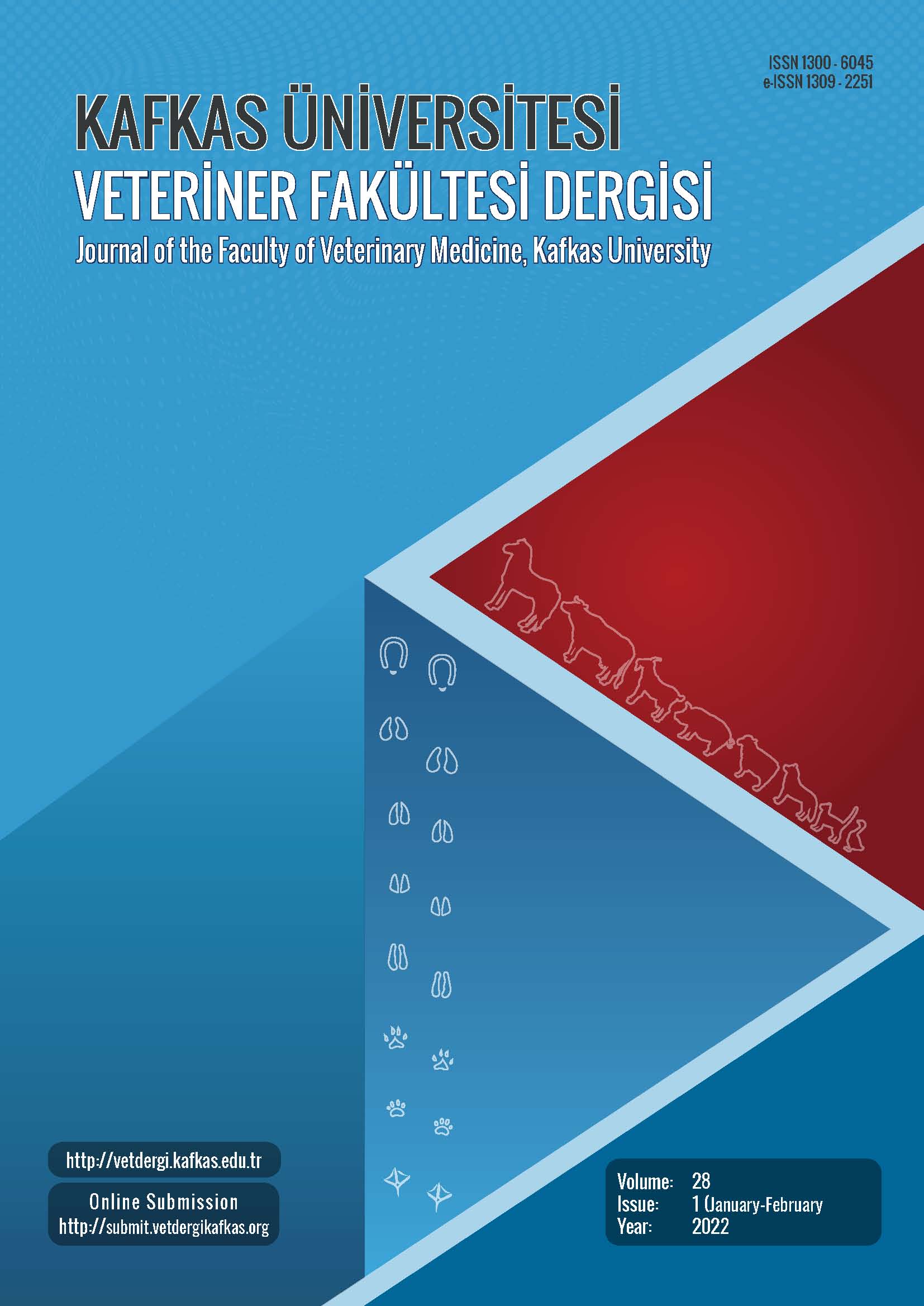
This journal is licensed under a Creative Commons Attribution-NonCommercial 4.0 International License
Kafkas Üniversitesi Veteriner Fakültesi Dergisi
2022 , Vol 28 , Issue 2
Phytochemical Analysis and Antimicrobial Effect of Essential Oil and Extract of Loranthus europaeus Jacq. on Acinetobacter baumannii, Staphylococcus aureus, and Pseudomonas aeruginosa
1Biotechnology and Medicinal Plants Research Center, Ilam University of Medical Sciences, Ilam, IRAN2Department of Environmental Health, Food Safety Division, Faculty of Public Health, Tehran University of Medical Sciences, Tehran, IRAN
3Clinical Microbiology Research Center, Ilam University of Medical Science, Ilam, IRAN
4Department of Pharmacology, Faculty of Medicine, Ilam University of Medical Sciences, Ilam, IRAN DOI : 10.9775/kvfd.2021.26626 With the increase in the use of antibiotics and resistance against them, attention has been paid to natural remedies with the possibility of lower resistance and side eff ects. In this study, the essential oil of Loranthus europeaus Jacq. was identified chemically and the antimicrobial eff ects of the essential oil and extract on bacterial agents such as Acinetobacter baumannii, Staphylococcus aureus, and Pseudomonas aeruginosa were investigated. L. europeaus leaves were collected from the Ilam mountains and after drying, essential oil and hydroalcoholic extract were prepared. The chemical compositions of the essential oil and extract of L. europeaus plant were measured by Headspace-solid phase microextraction (HSSPME), Gas chromatography-mass spectrometry (GC-MS), and High Performance Liquid Chromatography (HPLC) methods. The results showed that the main component of L. europeaus extract was Rutin (223 μg/mL). The bacterial strains were isolated from clinical samples, and the microbroth dilution method by Clinical and Laboratory Standards Institute (CLSI) method were used to evaluate the Minimum inhibitory concentration (MIC) and Minimum Bactericidal Concentration (MBC). The MIC and MBC for the L. europeaus leaf extract were 6 μg/mL and 196 μg/mL on S. aureus, respectively. It had no significant eff ect on the strains of A. baumannii and P. aeruginosa. L. europeaus leaf essential oil also had no antimicrobial eff ect on bacterial sauces. The results showed that the plant extract of L. europaeus might be used to treat infections due to its very low MIC against S. aureus. Keywords : Loranthus europeaus Jacq., Antibactrial, Phytochemistry, GC-SPME, HPLC, Rutin










